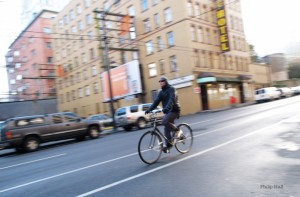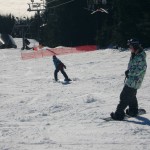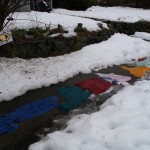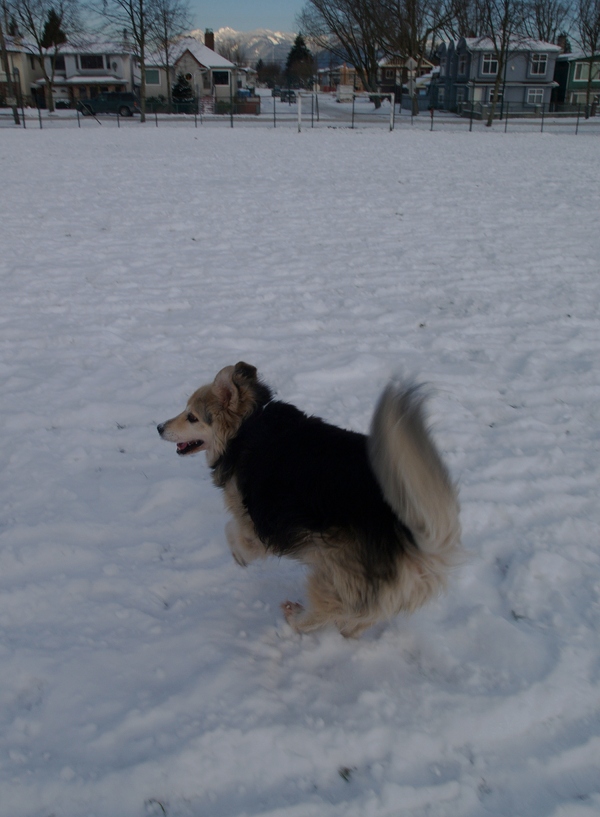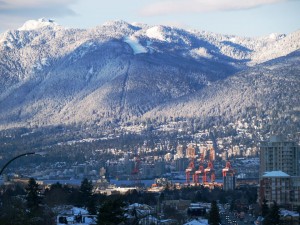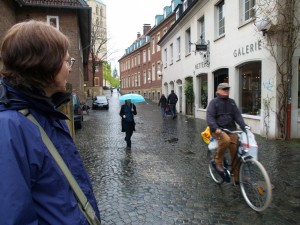Fog is weird, these days.
Fog used to be pretty common here when I was a kid. I can remember lots of days walking to school and hearing the Pt. Atkinson fog horning going. This past week we’ve had a return to that kind of weather. I’ve even heard the fog horns once in a while (though they aren’t as prominent as they were years ago.
The strange part of all this is that, up on the north shore mountains, it’s sunny and warm. Heck, it’s down right hot. I was up there today and it was 18 degrees.
I don’t know if temperature inversions are really rarer now than they were 30 years ago but, man, it’s weird to get off at the top of the Grouse skyride and feel a wave of air 12 degrees warmer than down at the base.
I finally rode the bike today.
So, I finally rode to work today. Bikeways were passable as Roland Tanglao suggested they would be but there was snow down the middle of them for their whole length and some intersections were still pretty sloppy.
Busy car-streets have been completely clear for days now. Why the city can’t run a plow down the bikeways to help us out is beyond me. So much for the supposed “priority” status of bikeways in this town.
Across the Street
My neighbour put these down on his sidewalk during the snow. They’re still there today.
I have no idea why.
Really.
Any conjectural suppositions are welcome.
The Origins of the Digital Cobbler
This site started a long time ago with a long article that formed the basis of the previous site. I’ve finally converted it to a set of WordPress pages on this site here.
What about “Nomads”?
All the different themes on this site connect to an underground urban concept that, among other things, is call Urban Nomadology. Here are a (very) few places to start exploring the concepts of urban nomadism:
Lipstick Traces by Greil Marcus is an amazing book. It connects the punk music explosion from late ’70’s Britain back to the situationists of Paris, the Dadaists, and much further back than that. This, from my perspective, is essential reading to understand the cultural component of Urban Nomadism here at the start of the 21st century.
Â
Nomadology.com is an interesting introduction to the topic. Not a “linear” or narrative one though.
Â
Of course, nomadism has no urban component in most people’s minds. When they hear “nomad” they usually think of Pastoral Nomadism , if anything. Mongolia presents a good example of pastoral nomadism. This U.S. Country Studies article might help. Although, there is, apparently, more to it.
So, here’s an extremely brief Urban Nomad Primer:
Despite the prevalence of Situationists throughout the 20th century (as examined in the aforementioned Lipstick Traces), the idea that this is connected to a kind of nomadism is a reasonably new idea. Â It’s, to me, the logical next phase of the Digital Cobbler concept. I think this embodies a kind of urban nomadism that is economic, cultural, and social.
Â
However, it’s also important to acknowledge right away that this is an urban component of digital geography that may have eqivalents in the exurban and rural communities. Or, using the names used in Joel Kotkin’sThe New Geography the book, the blog, in the Nerdistans and Valhallas of North America. It may be the case that these different types of communities are all so much inter-twined and are consequences of the same digital geography to the extent that I can’t discuss the urban component without dealing with the others.
Â
More about Urban Nomads in a while when I organize my readings and so on.
At least the Dog likes it.
I know I’m a curmudgeon about the snow. I just don’t like it on the ground down here where I live. But, I’ve gotta say, the dog sure likes it. That’s a picture of Shea, our 10-year-old dog, and she loves the snow and the cold weather. She plays in it like a pup. It’s almost enough to soften my grumbling. Almost.
It usually doesn’t look like this.
The fact of the matter is, despite the global perspective about our country (that it’s the “frozen north”; that it’s the source of storms dumping snow on the U.S.; that we have 8 months of winter, blah blah), Vancouver very seldom actuallly looks like this. Oh, sure, it snows once a year, usually. Sometimes it snows twice a year. But you usually can’t get a picture like this because many snowfalls are followed by rain (and rain and more rain) or the bright sun that might follow a snowfall doesn’t last long enough to get a picture like this.
So, here’s a picture to contribute to the myth. What can I say.
